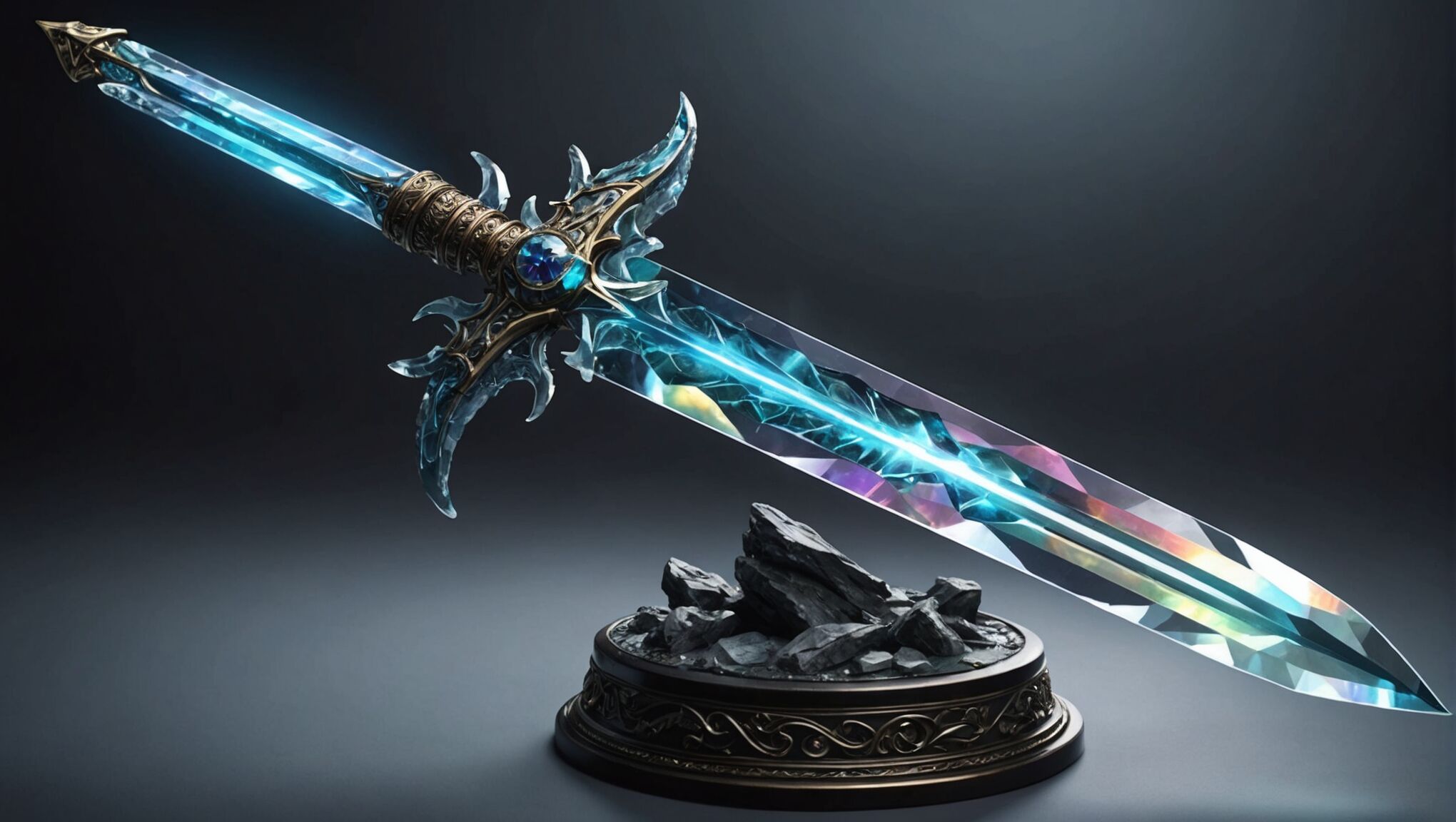blog
From Concept Sketch to Final Fantasy Cover Design
The journey of creating a Final Fantasy cover design begins with a spark of imagination. Artists immerse themselves in the game’s lore, characters, and themes, drawing inspiration from various sources. They might explore ancient mythologies, futuristic technologies, or fantastical creatures to capture the essence of the game world. “Inspiration can strike at any moment,” as many artists often say. During this phase, creators jot down ideas, create mind maps, and engage in free-form thinking to generate a multitude of concepts. They consider the game’s central conflicts, iconic locations, and pivotal moments that could potentially encapsulate the entire experience in a single image. Collaboration with game developers and writers is crucial, as their input helps shape the direction of the cover art. Artists also research previous Final Fantasy covers to ensure their concept aligns with the series’ visual legacy while bringing something fresh to the table. Visual storytelling takes center stage as they strive to convey the game’s essence without revealing too much. This initial brainstorming phase is characterized by boundless creativity, where no idea is too outlandish, and every possibility is explored to find that perfect concept that will eventually grace the cover of the next Final Fantasy installment.
Thumbnail sketches and composition
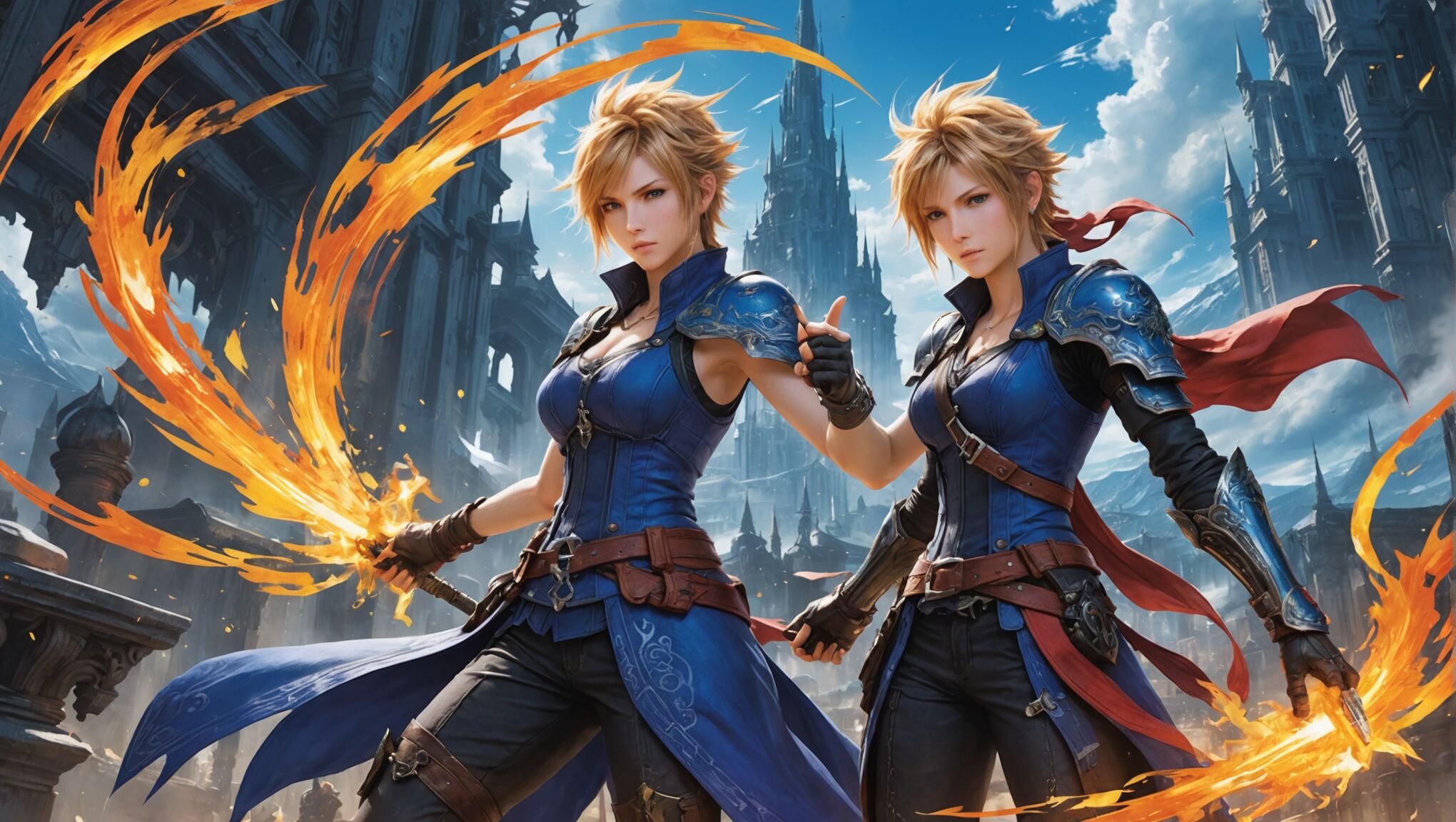 Once the initial concept is solidified, artists move on to creating thumbnail sketches, which are small, quick drawings that explore different compositions and layouts for the cover art. These rough sketches allow artists to experiment with various arrangements of characters, objects, and backgrounds without investing too much time in details. They typically produce dozens of thumbnails, each presenting a unique take on the chosen concept.
Once the initial concept is solidified, artists move on to creating thumbnail sketches, which are small, quick drawings that explore different compositions and layouts for the cover art. These rough sketches allow artists to experiment with various arrangements of characters, objects, and backgrounds without investing too much time in details. They typically produce dozens of thumbnails, each presenting a unique take on the chosen concept.
During this phase, artists pay close attention to the principles of design, such as balance, contrast, and focal points. They consider how the viewer’s eye will move across the image, ensuring that the composition guides attention to key elements. The rule of thirds, golden ratio, and other compositional techniques are often employed to create visually appealing and harmonious layouts.
“Composition is the arrangement of elements that will lead the viewer’s eye to the most important parts of your work, and then to all the secondary areas, in order of importance.” – Nathan Fowkes, concept artist and art instructor
Artists also explore different perspectives and viewpoints, from dramatic low angles that emphasize heroic characters to bird’s-eye views that showcase vast landscapes. They experiment with symmetry and asymmetry, negative space, and the placement of the title and logo, keeping in mind that the final design must accommodate these essential elements.
Scale and proportion play crucial roles in this stage, as artists determine how to best represent the epic scope of Final Fantasy worlds within the constraints of a cover image. They might juxtapose large and small elements to create a sense of grandeur or use overlapping forms to suggest depth and complexity.
Once a selection of promising thumbnails is complete, the artists present them to the art director and other stakeholders for feedback. This collaborative process helps narrow down the options to the most effective and compelling compositions. The chosen thumbnail then serves as the foundation for further development, guiding the artist as they move into more detailed sketches and character designs.
Throughout this process, artists remain flexible, knowing that the composition may evolve as the design progresses. They continue to refine and adjust the layout, always striving to create a cover that not only captures the essence of the game but also stands out on store shelves and in digital marketplaces.
Character and environment development
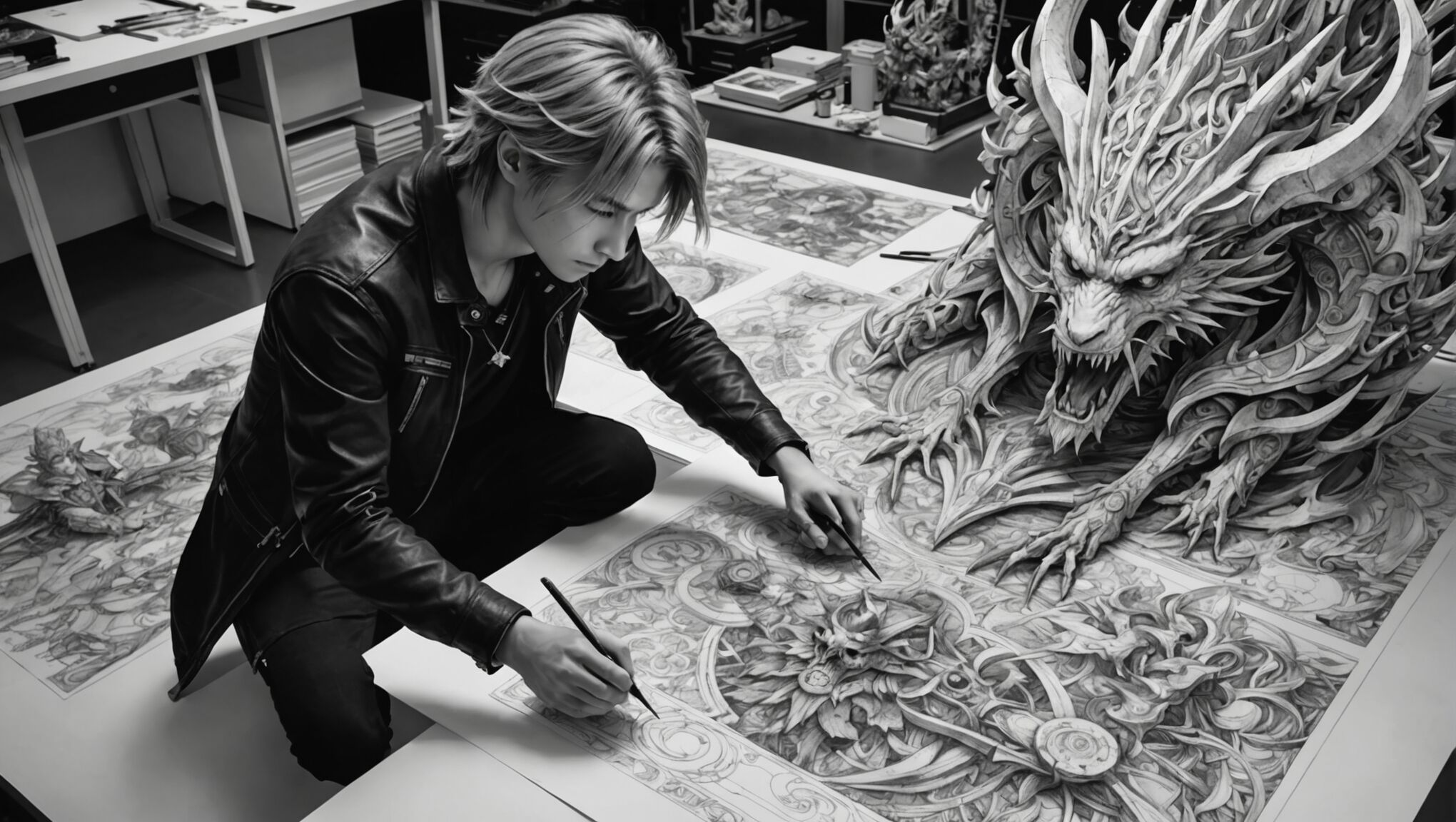
With the composition established, artists delve into the intricate process of developing characters and environments. They begin by creating detailed sketches of the main protagonists, antagonists, and supporting characters that will feature on the cover. Each character’s pose, expression, and attire are meticulously crafted to convey their personality and role within the game’s narrative. Artists pay close attention to anatomical accuracy, costume design, and unique features that make each character instantly recognizable.
Environmental elements are equally important in Final Fantasy cover art. Artists sketch out background landscapes, architectural structures, and fantastical elements that provide context and atmosphere. These might include towering castles, futuristic cityscapes, or mystical forests, depending on the game’s setting. The environment often serves to enhance the mood and reinforce the game’s themes, creating a cohesive visual narrative.
During this stage, artists frequently refer to the game’s concept art and 3D models to ensure consistency with the in-game visuals. They may also create custom designs for weapons, vehicles, or magical artifacts that play significant roles in the story. Every element is carefully considered for its visual impact and storytelling potential.
Attention to detail is paramount, as Final Fantasy fans are known for their keen eye and appreciation for intricate designs. Artists often incorporate subtle references to the game’s lore or previous titles in the series, rewarding observant viewers with hidden details and easter eggs.
As character and environment designs progress, artists continually refine their work, adjusting proportions, adding textures, and experimenting with different techniques to bring their vision to life. They may create multiple iterations of key elements, seeking feedback from the art director and game developers to ensure that the artwork aligns with the game’s vision.
Add meaningful symbols to your cover. Read our guide.
The integration of characters with their surroundings is a crucial aspect of this phase. Artists work to create a sense of harmony between figures and backgrounds, using compositional techniques to guide the viewer’s eye and create a dynamic, engaging image. They consider how light and shadow interact across the entire piece, ensuring that the characters feel grounded within their environment.
Throughout this process, artists strive to balance realism with the stylized aesthetic that Final Fantasy is known for. They aim to create characters and environments that are both believable and fantastical, capturing the imagination of players and setting the tone for the epic adventure that awaits them within the game.
Color palette selection
Once the composition and character designs are in place, the focus shifts to selecting the perfect color palette that will bring the Final Fantasy cover art to life. This crucial step sets the mood, atmosphere, and emotional tone of the entire piece. Artists carefully consider the game’s themes, settings, and overall aesthetic to create a cohesive and visually striking color scheme.
The process often begins with the creation of multiple color studies, exploring different combinations and their effects on the composition. Artists might start with a limited palette of 3-5 core colors and expand from there, ensuring that each hue serves a purpose in the overall design. They consider the psychological impact of colors, using warm tones to evoke energy and passion, or cool tones for mystery and serenity.
Contrast plays a vital role in color selection, as it helps guide the viewer’s eye and create focal points within the image. Artists may use complementary colors to make certain elements pop, or analogous colors for a more harmonious feel. They also experiment with saturation levels, using vibrant colors sparingly to draw attention to key areas while employing more muted tones for supporting elements.
The lighting of the scene greatly influences color choices. Artists determine the main light source and how it affects the overall color temperature of the image. They carefully consider how different materials and textures in the scene would react to this light, adjusting colors accordingly to create a sense of depth and dimensionality.
| Color Purpose | Example |
| Mood Setting | Deep purples and blues for a mysterious atmosphere |
| Character Emphasis | Warm oranges and reds for a heroic protagonist |
| Environmental Storytelling | Lush greens and earthy browns for a forest setting |
Artists also consider the brand identity of Final Fantasy, often incorporating signature colors associated with the series, such as the iconic blue used in many logos. They ensure that the chosen palette will work well with the game’s logo and typography, creating a cohesive package design.
Digital tools allow for quick experimentation with different color schemes. Artists may create multiple versions of the same composition with varying palettes, comparing them side by side to determine which best captures the desired mood and enhances the narrative elements of the cover.
As the color palette is refined, artists pay attention to how it will reproduce across different mediums, from printed materials to digital displays. They consider color gamuts and potential variations in printing processes to ensure that the final product maintains its intended impact across all platforms.
Throughout this process, communication with the art director and game developers remains crucial. The chosen color palette must not only be visually appealing but also accurately represent the game’s content and marketing vision. Artists may need to make adjustments based on feedback, fine-tuning the colors until they achieve the perfect balance that will make the Final Fantasy cover art truly captivating.
Digital rendering techniques
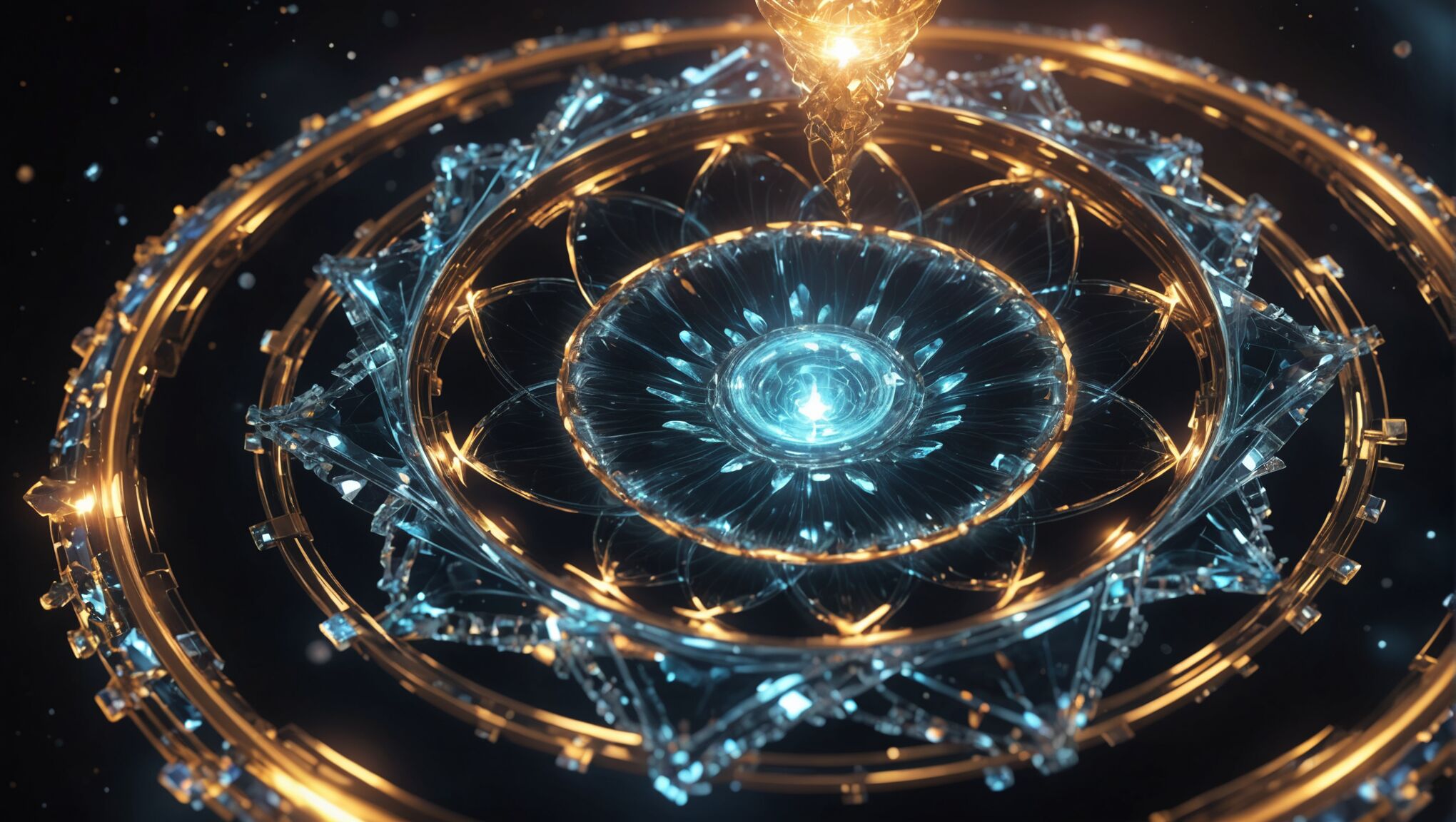 As the digital rendering phase begins, artists transition from traditional sketches to powerful software tools, bringing their concepts to life with unprecedented detail and precision. This stage is where the magic truly happens, as flat designs are transformed into vibrant, three-dimensional worlds that leap off the screen.
As the digital rendering phase begins, artists transition from traditional sketches to powerful software tools, bringing their concepts to life with unprecedented detail and precision. This stage is where the magic truly happens, as flat designs are transformed into vibrant, three-dimensional worlds that leap off the screen.
Artists often start by creating a basic underpainting, establishing the overall values and tones of the composition. Using layers, they gradually build up the image, working from large shapes to fine details. Specialized brushes mimic various textures, from the rough bark of ancient trees to the smooth sheen of futuristic armor.
One of the most crucial aspects of digital rendering is the manipulation of light and shadow. Artists use advanced lighting techniques to create depth and atmosphere, carefully considering the direction and quality of light sources. They employ soft ambient occlusion to add subtle depth to crevices and folds, while sharp rim lighting helps define edges and create a sense of drama.
Blending modes become invaluable tools, allowing artists to overlay textures, adjust colors, and create ethereal effects that would be challenging to achieve with traditional media. They might use the “multiply” mode to deepen shadows or “screen” to add magical glows and highlights.
Particle effects and custom brushes come into play when rendering magical elements or environmental details. Artists might create swirling energy fields, billowing smoke, or shimmering crystal formations, each requiring its own unique approach and set of digital techniques.
As the rendering progresses, artists pay close attention to material properties, ensuring that metal gleams realistically, fabric drapes convincingly, and skin has a lifelike translucency. They use various layer styles and filters to enhance these material qualities, creating a rich tapestry of textures that invites closer inspection.
3D software often complements 2D rendering techniques, allowing artists to create complex geometric shapes or architectural elements with precise perspective. These 3D elements are then seamlessly integrated into the 2D artwork, adding another layer of depth and realism.
Throughout the rendering process, artists constantly refine and adjust their work, zooming in to paint intricate details and stepping back to assess the overall composition. They may use reference photos or 3D models to ensure accuracy in anatomy, lighting, and perspective.
The ability to work non-destructively is a significant advantage of digital rendering. Artists can experiment boldly, knowing they can always revert changes or adjust specific elements without affecting the entire piece. This flexibility encourages creativity and allows for rapid iteration.
As the rendering nears completion, artists focus on creating focal points and guiding the viewer’s eye through the composition. They might enhance contrast in key areas, add subtle motion blur to suggest movement, or use color grading techniques to unify the entire image.
The digital medium also allows for easy collaboration, with artists able to share their work-in-progress with team members and receive immediate feedback. This iterative process ensures that the final render aligns perfectly with the game’s vision and marketing goals.
By mastering these digital rendering techniques, artists can create Final Fantasy cover art that not only captures the imagination but also pushes the boundaries of what’s visually possible. The result is a stunning piece of art that serves as a window into the game’s world, inviting players to embark on an epic adventure.
Finalizing and polishing the cover art
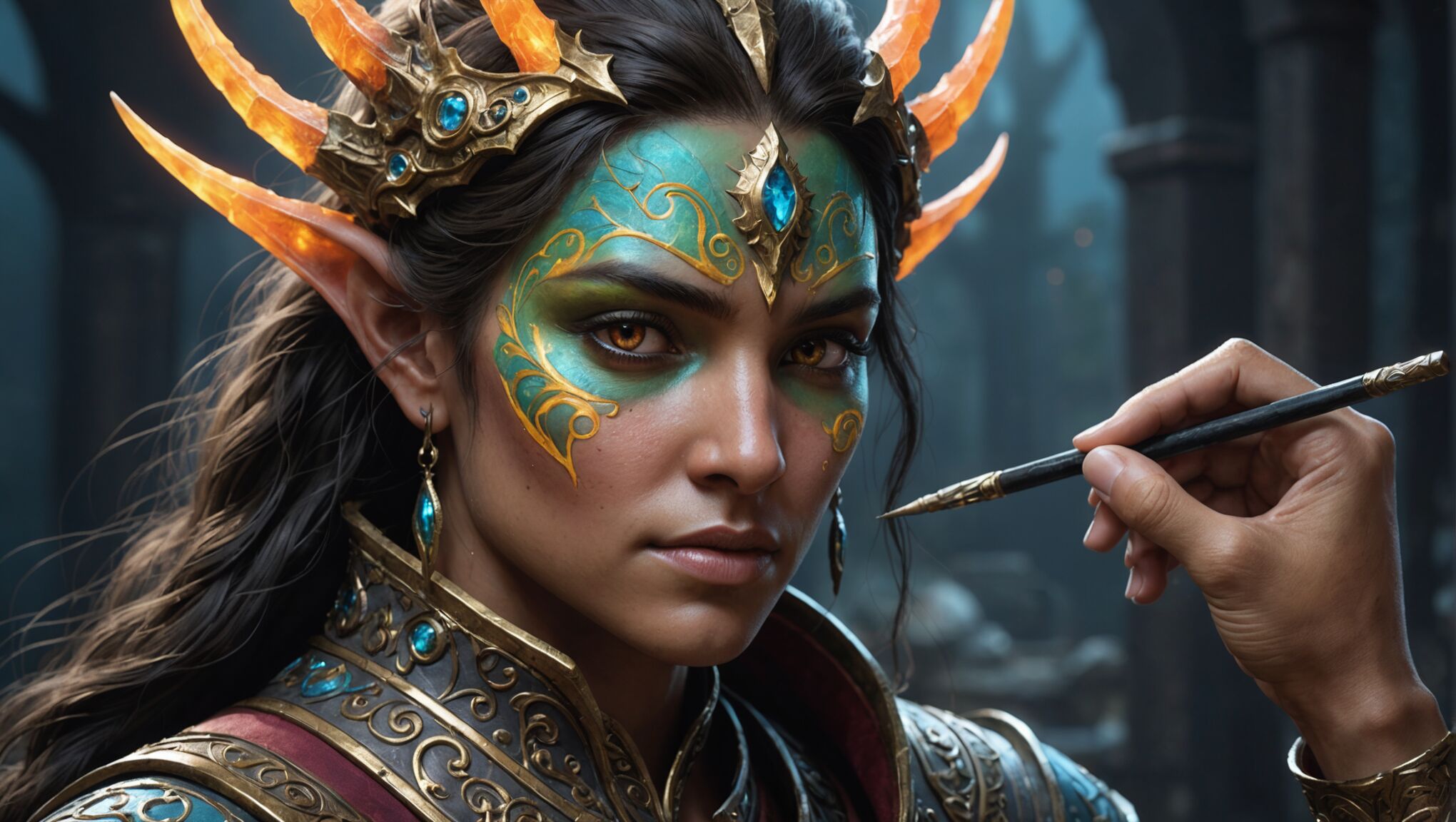
As the cover art nears completion, artists enter the critical phase of finalizing and polishing. This stage is all about refining details, enhancing visual impact, and ensuring that every element contributes to a cohesive and stunning final image. Artists meticulously review their work, zooming in to scrutinize individual pixels and stepping back to assess the overall composition.
One of the key aspects of this phase is color correction and grading. Artists fine-tune the color balance, adjusting hues, saturation, and brightness to achieve the perfect mood and atmosphere. They may apply subtle color overlays or gradients to unify the image and create depth. Contrast is carefully calibrated to ensure that important elements stand out while maintaining a harmonious overall look.
Texture work receives particular attention during this stage. Artists add intricate details to surfaces, enhancing the realism of materials like metal, fabric, and skin. They might use custom brushes or textures to create realistic wear and tear on armor, add a subtle sheen to magical elements, or emphasize the organic nature of environmental features.
Lighting effects are refined to create a more dramatic and immersive atmosphere. Artists may add subtle lens flares, adjust the intensity of glowing elements, or create complex shadow patterns to add depth and interest. They carefully balance these effects to enhance the image without overpowering the main subject matter.
Special attention is given to the characters’ faces and expressions. Artists zoom in to perfect every detail, ensuring that eyes sparkle with life, skin textures are realistic, and facial expressions convey the appropriate emotions. Hair receives meticulous treatment, with individual strands and highlights added to create a sense of volume and movement.
The integration of the game’s logo and title is a crucial part of this final stage. Artists work closely with graphic designers to ensure that the typography complements the artwork without obscuring important visual elements. They may adjust colors or add subtle effects to the text to help it blend seamlessly with the overall design.
As the deadline approaches, artists conduct a final review, addressing any last-minute feedback from the art director or game developers. They may make subtle adjustments to composition, tweaking the position of elements or adjusting their scale to perfect the visual flow. Every pixel is scrutinized to ensure that the image looks flawless at various sizes, from thumbnail previews to large-format prints.
Before submitting the final artwork, artists prepare different versions optimized for various media, including high-resolution files for printing and compressed versions for digital distribution. They conduct thorough quality checks to ensure that the image retains its impact across different platforms and devices.
The result of this painstaking process is a polished, captivating Final Fantasy cover that not only represents the game’s content but also stands as a work of art in its own right. It’s a cover that will grace store shelves, digital marketplaces, and collectors’ editions, serving as the first point of contact between the game and its audience, promising the epic adventure that awaits within.

